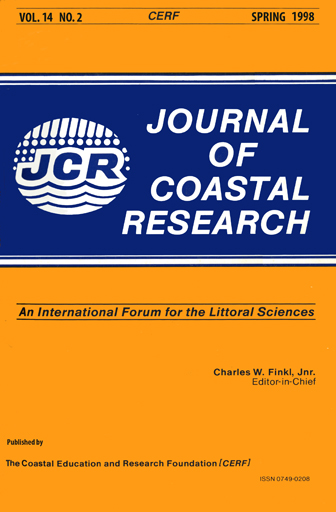Rapid Deterioration of a Salt Marsh in Venice Lagoon, Italy
Keywords:
Mediterranean, Venice Lagoon, salt marsh, erosion, sea-level riseAbstract
From March 1993 until June 1995, various aspects of sediment dynamics and geomorphological change were measured in an eroding salt marsh in Venice Lagoon. Marsh edge retreat and changes in interior pond size were measured in relation to permanent stakes placed in the marsh. Short term sedimentation and vertical accretion on the marsh surface were measured as the deposition of material on filter papers and the accumulation of material over feldspar clay marker horizons, respectively. A sedimentation-erosion table was used to measure elevation change of the surface of the marsh and the eroding mudflat in front of the marsh. High wave energy caused by strong winds and a long fetch is leading to marsh edge retreat of 1.2-2.2 m yr -1 and the formation of new tidal channels which are cutting rapidly into the marsh. Short-term sedimentation was highly variable, ranging from 2.9 to 72.3 g m-2d -1, with the highest values occurring during strong storms. Vertical accretion on the marsh surface was high, averaging 2.3 cm yr -1. This was reflected in high increases in marsh surface elevation which averaged 1.54 cm yr -1. By contrast, the eroding marsh front lost elevation at 4.12 cm yr-1. The high rate of accretion in the marsh is supported by material eroded from the marsh front and the lagoon bottom. Wave energy and the tidal prism in the lagoon have increased due to increased depth and fetch. Thus, this marsh is likely to deteriorate rapidly despite the high sediment input because of the high rates of lateral erosion. The most practible solution to this deterioration is reduction of wave energy by permeable barriers.


